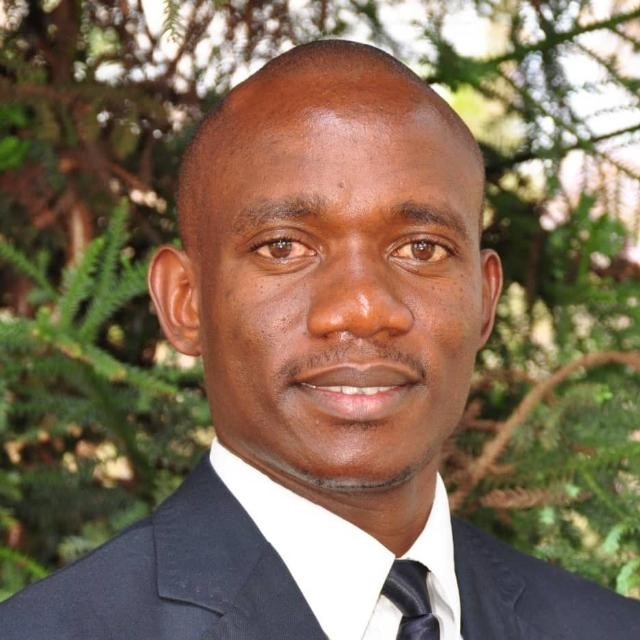
February 12, 2021, by Andrew Edwards (Ed)
Exploring diversity in pearl millet seed – An interview with Brighton Gapare
Brighton Gapare is a joint Nottingham-Rothamsted PhD Student 2019–2023. His project is entitled ‘Exploring genetic diversity in grain structure, composition and functionality of pearl millet germplasm’. His supervisors are Dr. Rahul Bhosale (UoN), Prof. Malcom Bennett (UoN) and Prof. Peter Shewry (RRes). He also works with Dr Neil Graham (UoN), Prof. David Cook (UoN), Prof. Ian Fisk (UoN) and Dr. Ndjido Kane from Senegal (ISRA and ITA)
Why did you decide to do a PhD? What were you doing before?
My desire to do a PhD started in June 2010 when I was doing my BSc in Natural Resources Management and Agriculture (Agronomy) at the Midlands State University in Zimbabwe. As part of the course, I went for an internship at the International Maize and Wheat Improvement Centre (CIMMYT) Zimbabwe. Working in a multi-cultural environment, where all senior positions were occupied by internationally renowned scientists, inspired me to be like them one day.
After I completed my MSc in Crop Science (Plant Breeding and Genetics), I worked at the International Crops Research Institute for the Semi-Arid Tropics (ICRISAT) in Zimbabwe as gene bank manager, responsible for the Eastern and Southern Africa regions. My role was to acquire, conserve, document, characterise, evaluate, and disseminate plant genetic resources for food and agriculture. I worked on ICRISAT’s six mandate crops; sorghum, pearl millet, finger millet, groundnut, pigeon pea and chickpea. My tenure as a custodian of this important resource further whetted my appetite to pursue a PhD.
Why did you choose this particular PhD project?
I had met numerous scientists whose PhDs could be traced back to the UoN School of Biosciences. When I saw this opportunity to work on the pearl millet grain project, I knew this was my chance to shine.
Rothamsted Research is another of the UK’s leading research organisations so I am fulfilling a dream by studying in the UK at the UoN, in collaboration with Rothamsted.

Brighton working in a pearl millet research field at ICRISAT Zimbabwe
Tell us about your research. What do you study? Why is it important?
I am employing high-throughput, cutting-edge technological tools to explore the genetic diversity in grain structure, composition, and functionality of diverse pearl millet germplasms. I want to understand the impact this has on food and beverage processing and nutritional quality.
My research will result in the identification of promising lines and genes associated with desirable compositional, functional, and structural traits. These will be used in crop improvement programmes and novel applications by breeders, farmers, and processors.
How do you explain your research to ordinary people?
I aim to improve the economic value of pearl millet, a nutrient-rich staple crop in sub-Saharan Africa and parts of Asia. Improved pearl millet has several health benefits (high in iron and zinc) as well as economic benefits. It requires few inputs and is more tolerant to low heat and drought than other cereals.
I believe that my work will enhance the livelihoods of many who depend on this climate-smart crop. It will also improve access to healthy and nutritious food for many disadvantaged communities, especially women and children.
How is your first year going? Any highlights or successes?
A highlight was my visit to Rothamsted Research with Dr. Rahul Bhosale to meet Prof. Peter Shewry. I learnt a lot from the Rothamsted teams during a tour of their microscopy and imaging suite, metabolomics and lipidomics sections.
Has undertaking a PhD been different from other degrees you have done? How so?
Yes. I am spending most of my time in the laboratories, applying what I learnt before and learning much more by myself. A PhD is a bag of mixed feelings and experiences: sometimes it is fascinating but sometimes it is frustrating, especially when you fail and have to start all over again.
How do you cope with the pressure of doing a PhD?
When I feel the pressure mounting, I usually take a break and connect with my family and friends back in Zimbabwe. Occasionally, I play my traditional Zimbabwean musical instrument called a ‘mbira’. A mbira is a ‘plucking idiophone’ and is played using three fingers (the left and right thumbs and the right fore finger). This instrument is associated with the Shona people of Zimbabwe.
Once in a blue moon, I do some baking, especially when the weather is so unfriendly that I cannot take a stroll to reconfigure my mind by the serenity of the River Soar.

A journey of a thousand miles slowly but surely coming to the beginning of an end I reckon … the years gone by and the years to come all make the man we call and have today as it will be tomorrow I take great gratitude in this journey and let it enrich you to the highest level you so desire…Go go young brother
Gapipi